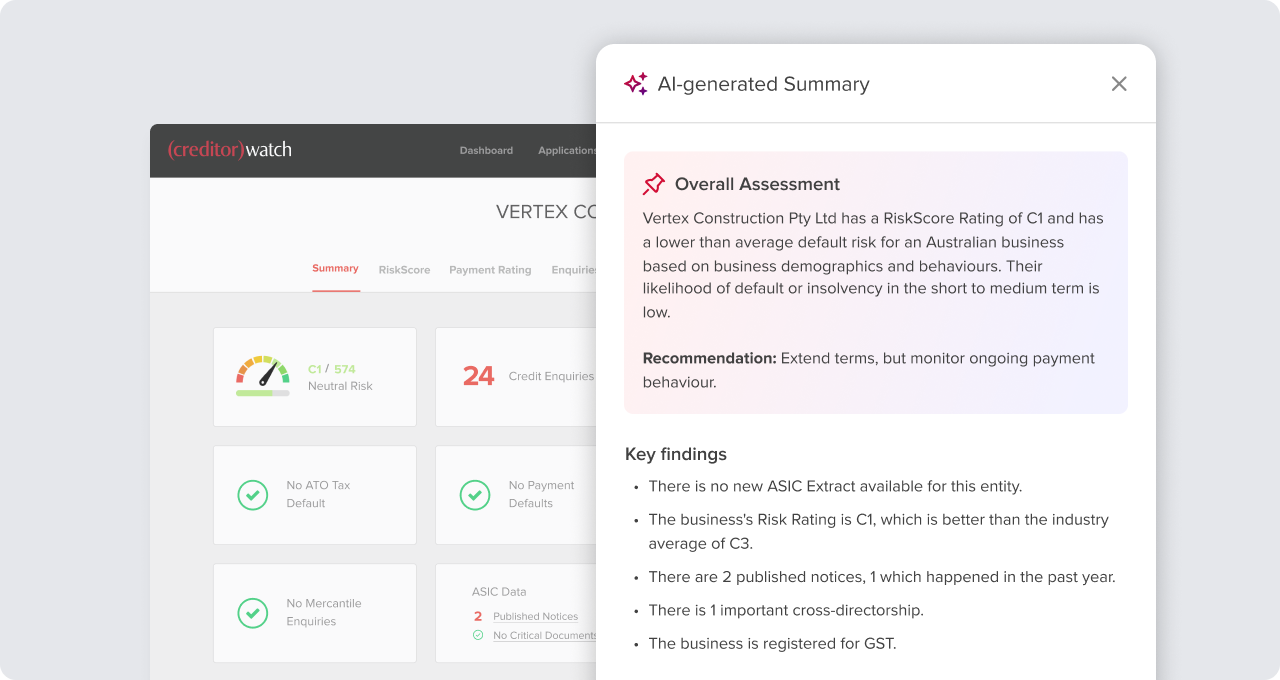As we have commenced Financial Year 2023, the rates of insolvency within the financial services industry have risen, illustrating the critical challenges these businesses continue to face. Managing credit risk is essential to maintain the flow of revenue from trusted trading partners, and avoid the prospect of default.
The performance of the financial services industry has been lagging, facing a swell of outgoing costs both in-house, and by proxy through their clients. As the margins of client businesses tighten, as a result of factors such as rising inflation and global supply chain issues, so too do the margins of large companies within this sector. As clients encounter higher prospects of default, the credit risk exposure to such companies can be significant.
In tandem with the challenges of a domestic skills shortage facing this industry, it’s clear that protection mechanisms against bad debt need to be implemented in order to safeguard the future of the business.
Credit risk challenges for financial services businesses
Businesses within financial services often have the tendency to mirror the credit exposure of their clients. As rates of credit default rise for individual partner businesses, as they have done for many recently due to issues such as a shortage on raw materials, that risk often gets passed on to the companies handling portfolios such as their accounts, finances and bookkeeping.
These tightening client margins can also be indicative of broader credit risk across entire industries. If one client potentially defaults on their outstanding debt, there may be others within the industry facing equally challenging cash flow issues. As clients within industries such as construction are unanimously exposed to price hikes on essential goods, the risk profile of the whole sector increases. If one company has multiple clients within that sector, then it has the potential to jeopardise their revenue stream quickly.
Financial services companies may encounter a range of challenging scenarios in response to the payment difficulties of trading partners, beyond even that of default or potential insolvency and administration. Some companies may choose to deliberately liquidate, declare bankruptcy or abandon their business, in an illegal practice known as phoenixing, in order to avoid paying their debts.
It additionally can be difficult to appraise the trustworthiness of any given business, with a number of company directors throughout Australia retaining seats on other boards, resulting in a higher chance for conflict of interest. Cross-directorship can be hard for a financial services business to discover, and may present unique challenges towards truly assessing how reliable a debtor might be.
How financial services companies can reduce credit risk
There are numerous ways that a company within this sector can implement changes to both the credit reporting tools available, and the workflow processes associated with them, in order to more accurately assess partner businesses.
Know exactly who you’re working with – Diligent credit reporting systems, complete with credit score checks, are fundamental for any large company within this space, when assessing either an existing or new client. The risk of client default needs to be identified early in order to mitigate any passed-on exposure to credit risk. To this end, a tool such as Creditor Watch’s RiskScore uses live-data feeds to provide the most contemporary, accurate real-time credit ratings for any potential partner business, allowing for a truly transparent picture of creditworthiness.
This transparency should also extend to any due diligence concerning any directors that may represent multiple associated companies, to flag any potential conflict of interest as early as possible. Truly assessing the credit risk profile of a partner company is impossible without full grasp of all the relevant stakeholders and their associated business.
Implement watertight monitoring and alerts for adverse changes – Should any associated client or industry begin to show signs of potential default, credit risk, or bankruptcy, the business needs to be across that information as quickly as possible in order to plan effectively. The creditworthiness of clients may change quickly, due to volatile increases in industry cost, and that elevated risk needs to be identified by any financial services provider.
When late payments occur, ideally as soon as an invoice passes due, all personnel within Accounts need to ensure that this information is closely monitored and delivered to the relevant stakeholders within the business. If a client’s credit risk increases and a business fails to pick up the warning signs on a credit score check, then they themselves may be placed at risk of default.
Be proactive in debtor management – When there are upward cost pressures on clients and debtors, it’s prudent to implement or update additional creditor management and debt collection tools. This may mean an adjustment to your payment terms or credit policy details that may place a further onus on any trading partner to ensure that they settle debts quickly and efficiently. Within the context of a high-cost trading environment this creates additional security, allowing extra time for contingency planning should a client’s credit risk increase.
An interactive trade program, such as Creditor Watch’s DebtorLogic, allows for a far more proactive management of this process, providing a data-driven analysis of the entire customer portfolio. This may allow a business to more easily identify early warning signs of credit risk, default, or deteriorating payment behaviour, allowing greater time and resources to tackle the challenge. This product additionally assists in prioritising debt collections for the business, improving the average time taken to service an outstanding credit and stabilising revenue.
Throughout the last few years the Financial Services industry has experienced some significant credit and revenue challenges. However, with the appropriate safeguards and practices in place, there is every chance to thrive moving into the future.
Contact us today to hear more about how our suite of digital credit management tools can help you protect and grow your business.

Get started with CreditorWatch today
Take your credit management to the next level with a 14-day free trial.

